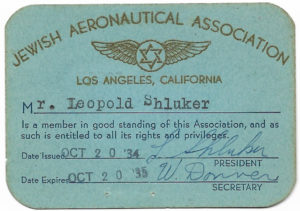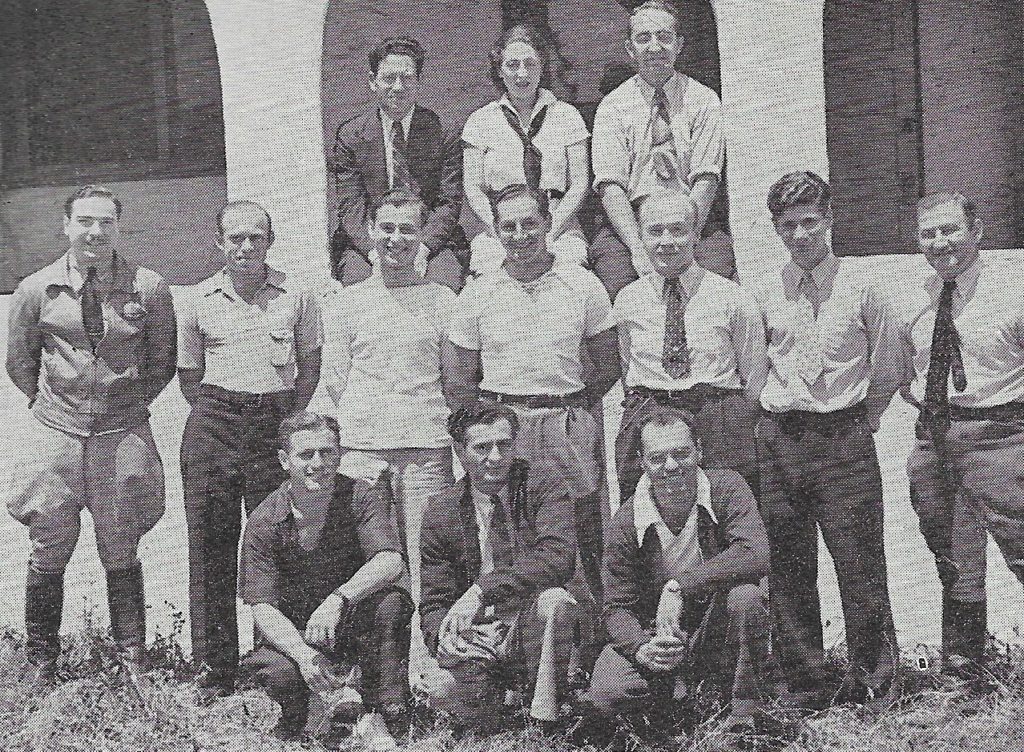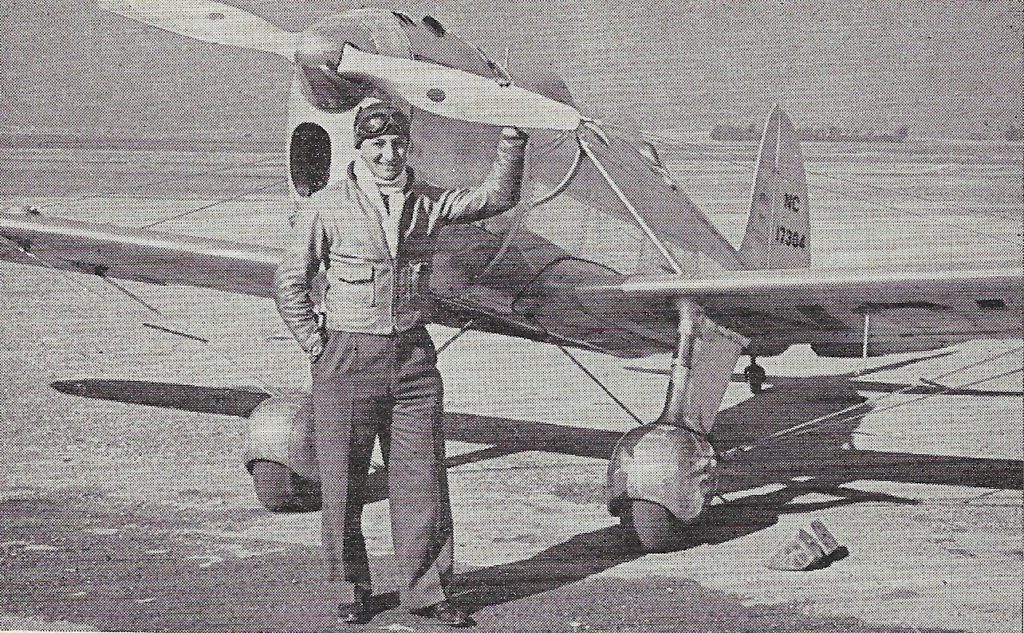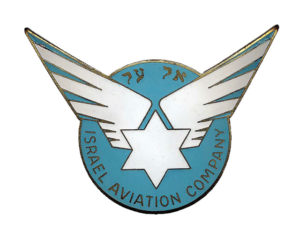The Jewish Aeronautical Association, Los Angeles, 1933-1941
The formation of the Jewish Aeronautical Association began with an incident in 1933.
Leonard Shluker, a Canadian-born flying enthusiast, was volunteering as an aircraft mechanic when another mechanic remarked that, in his opinion, a Jew could not fly an airplane.
The incident took place at Mines Field, named for real estate agent William W. Mines, which would grow to become Los Angeles International Airport in 1949.
Inspired to prove the naysayer wrong, Shluker contacted a few friends to form a Jewish flying club. They ran a notice in the local B’nai B’rith Messenger (August 25, 1933):
Several Jewish young men interested in aviation have expressed their intention of forming a club in Los Angeles which will be open to all interested in the sport. Leopold Shluker, who is a student flyer and has been interested in aviation for the past five years, is sponsoring the club project. Those who are interested in becoming affiliated with such an organization to learn to fly are invited to communicate with Mr. Shluker at Atlantic 8942. Social activities will be stressed.
The nascent group called itself Jewish Air Cadets. By December 1933, the name was changed to Jewish Aeronautical Association (JAA).
The initial JAA roster included twenty-four members, ages eighteen to thirty-eight, from various backgrounds and occupations. Meetings were held each Friday night and featured speakers from the United States Army and Navy, airplane builders and engineers, and inspectors from the Civil Aeronautics Authority. Dinner parties, dances, wienie roasts, and aviation motion pictures were also common.
Most members took flying lessons, which the club purchased in blocks at reduced rates. During its heyday, JAA bought one hundred hours at a time and flew up to fifteen airplanes on weekends.
When enough members had their flying licenses, the club made regular group flights to San Diego, Murrieta Hot Springs, Palm Springs, and elsewhere. Other flight activities included dog fights, target bombing (with flour sacks), and spot landing contests.
The first JAA officers were announced in March 1934: William Denels, president; Melton S. Wallack, vice president; and Leopold Shluker, secretary. The club had thirty members at the time.
In 1934, JAA began renting a house at Dycer Airport, where they disassembled and reassembled fuselages and engines to gain familiarity with aircrafts.
The club’s insignia, designed by member Bernard Haines, consisted of a pair of wings stemming from each side of a circle containing a six-pointed Star of David. A version of the insignia was later used by Israel’s El Al Airlines, which was formed with help from club member Sam Lewis.

Leopold Shluker, Jewish Aeronautical Association membership card, 1934. Western States Jewish History Association Archives
JAA’s first major event took place on Sunday, March 25, 1934:
Believed to be the first of its kind in the history of aviation, an all Jewish flying club, the Jewish Aeronautical Association, is to make its first formation flight over Los Angeles and Hollywood…Twelve airplanes will be engaged in this novel flight, leaving from Los Angeles Municipal Airport. The planes will be piloted by Jewish fliers and observers, led by William Denels and Mel Wallack. A parachute jump is also planned by Abe Bradofsky, a member of the association. (Los Angeles Herald Express, March 20, 1934).
Molly M. Mintz, one of three female members of JAA, was among the twelve observers on the flight. The three women dropped out of the club in 1936, feeling that it had become a “men’s club.”
At the urging of the Jewish community of Los Angeles, JAA changed its name to the California Flying Club in 1936. With increasing anti-Semitism around the globe, it was feared that the club would be mischaracterized as an extra-military Jewish organization, perhaps with the goal of supporting Jews in Palestine. Club members initially refused the change, but acceded to the request in May 1936.
Around that time, the club learned of the existence of a Jewish flying association in Palestine. The two organizations began corresponding, and it was discovered that the Palestine club was part of a Jewish military underground.
The Los Angeles club dissolved in 1941 in the lead up to America’s entry into World War II. Nearly every member contributed to the war effort, including in the United States Air Force.
During its lifespan, the aeronautical association had approximately one hundred members.

Jewish Aeronautical Association members, Dycer Airport, Los Angeles, 1934. Left to right: (top) Arthur Feureman, Rosalie Schwartz, David Bushner; (middle) Bernard Haines, Mr. Cohen, Al Dardick, Leopold Shluker, Nathan Kluner, Mr. Kline, Milton Sharkansky; (bottom) Allen Brandes, Sam Greenspan, Reuben Simon. Western States Jewish History Association Archives
Source
- Sue Lipman and Norton B. Stern, “The Jewish Aeronautical Association,” Western States Jewish Historical Quarterly 4/2.
Jonathan Friedmann is curator of this Jewish Aeronautical Association exhibit.


